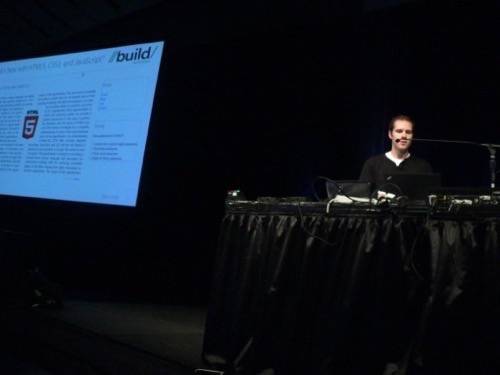At the end of this discourse, to borrow a phrase from my hero, Edward R. Murrow, a few people may accuse this reporter of fouling his own comfortable nest. But if you’ve seen this nest recently, you know that if it was fouled to any considerable degree, it might not look all that different anyway.

At one of Microsoft’s sessions on HTML5 and CSS3 a few weeks ago, the lead program manager for Internet Explorer 10, John Hrvatin, was introducing Web developers to the basic concepts of layout. These were folks who held up their hands to show they’ve built Web sites for a decade or more. And for many of them, this was the first experience they ever had in considering the following elements: Column flow. White space. Gutter adjustment. Pagination. Visibility at a distance. Symmetry.
Editor’s note: This story is part of a series we call Redux, where we’re re-publishing some of our best posts of 2011. As we look back at the year – and ahead to what next year holds – we think these are the stories that deserve a second glance. It’s not just a best-of list, it’s also a collection of posts that examine the fundamental issues that continue to shape the Web. We hope you enjoy reading them again and we look forward to bringing you more Web products and trends analysis in 2012. Happy holidays from Team ReadWriteWeb!

The reason HTML5 (in all its many manifestations) is such a foreign object to so many companies, especially publishers, is because we have gone so long without acknowledging these basic elements of style that they have ceased to be part of our diet. Blogs, which house a majority of the Web’s daily content, are the fast food of today’s publishing society. They give publishers a convenient means for manufacturing roughly uniform, bite-size chunks of content in a long, single column. And in turn, they give aggregators such as Google News and now, even more prominently, Facebook an easy means for repackaging and broadcasting that content to whatever passes today for a mass audience.
The blog format relieves publishers from the tiresome duty of producing covers and front pages and things to make their content more attractive and attract readers. In some cases, it enables publishers to surrender any responsibility for making content attractive in the first place.
There is a prophetic scene in the magnificent movie “Wall-E” where, after having floated in space for centuries in a self-contained shopping mall, the remains of the human race return to Earth. There, upon realizing that food once grew on trees and that trees must be cared for, the people ponder for the first time in their lives just how the pizza and ice cream sprouted forth from these stem-like thingies.

This is what sitting in that room for the Microsoft session reminded me of. Here, Hrvatin was preaching principles I’ve believed my entire career: that an online publication should become functional, like software, and that software should become informative and balanced, like a magazine.
HTML5 restores to the public conscience all those prospects and possibilities we publishers lost sight of when we became bloggers:
1. Not all articles should be created equal. Blogs are conveyor belts for nuggets of text. But a major news story, a feature on how to build a private cloud in your office, an interview with a mobile app developer, and some guy ranting about the stupidity of the blog format, are different beasts with varying life spans. Longer-living articles should be allowed to live longer, rather than being dumped off the conveyor belt into the void when replacements come along. HTML5 offers the possibility of componentized, two-dimensional layout where the Table of Contents can live and breathe again.
2. Publications are packages. The great thing about the magazine was that the reader tended to consume most or all of it. Readers appreciated it as a whole. Blogs are designed to be entered through the middle, into the meat of an article, and then exited through-and-through like a bullet. Even regular readers of a blog find themselves entering and exiting, letting their aggregator of choice lead the way. By reviving an old concept of scaling components to suit flexible-sized containers, HTML5 enables tables of contents to zoom in and out of unused spaces, so that readers entering through the middle are treated to the entire package.
3. An article does not have to be an “article.” In a blog, anything functional – a video, a podcast, an interactive chart – must be embedded in the text, and the frame and context for the functional element must fit within whatever the text allows. This is, and has always been, backwards. HTML5 recognizes, and to at least some extent addresses, the fact that functional elements do not belong in static containers. In other words, apps are not text. So if a publisher wants to at least try to produce a piece of useful software as a feature of its publication, it need not be concerned with the syntax of the embed tag or the requirements of the plug-in.
HTML5 offers a glimpse of the freedom to define the Web publication the way it should have been defined fifteen years ago: as a more functional descendant of the magazine and the broadcast. But it can only do so to the extent that the content management systems upon which publishers have entrusted their livelihoods embrace, incorporate and advance that vision. This is not a certainty; in fact, I fear it’s not even a likelihood.
The CMS of today is a machine that produces blogs, that shapes and forms content to equal-sized nuggets dropped onto a conveyor belt, the length of which constitutes the duration of their natural lives. It’s about as prepared to embrace the full prospect of HTML5 as government is prepared to embrace “change.” As long as Web publishers continue to rely on today’s CMS to define the nature of their content, they’ll remain stuck in deep space aboard the Starship Buy ‘n’ Large.










